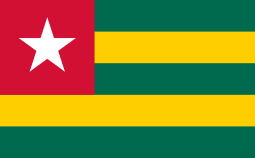Bressuire
| Bressuire | ||
|---|---|---|
|
Chateau de Bressuire and the Eglise Notre-Dame | ||
| ||
 Bressuire | ||
|
Location within Nouvelle-Aquitaine region  Bressuire | ||
| Coordinates: 46°50′27″N 0°29′14″W / 46.8408°N 0.4872°WCoordinates: 46°50′27″N 0°29′14″W / 46.8408°N 0.4872°W | ||
| Country | France | |
| Region | Nouvelle-Aquitaine | |
| Department | Deux-Sèvres | |
| Arrondissement | Bressuire | |
| Government | ||
| • Mayor (2001–08) | Jean Michel Bernier | |
| Area1 | 180.59 km2 (69.73 sq mi) | |
| Population (2006)2 | 19,274 | |
| • Density | 110/km2 (280/sq mi) | |
| Time zone | CET (UTC+1) | |
| • Summer (DST) | CEST (UTC+2) | |
| INSEE/Postal code | 79049 / 79300 | |
| Elevation |
98–236 m (322–774 ft) (avg. 173 m or 568 ft) | |
|
1 French Land Register data, which excludes lakes, ponds, glaciers > 1 km² (0.386 sq mi or 247 acres) and river estuaries. 2 Population without double counting: residents of multiple communes (e.g., students and military personnel) only counted once. | ||
Bressuire (pronounced: [bʁɛs.ɥiʁ]) is a commune in the Deux-Sèvres department in France. The town is situated on an eminence overlooking the Dolo, a tributary of the Argenton.
Notable buildings
Bressuire has two buildings of interest: the church of Notre-Dame, which, dating chiefly from the 12th and 15th centuries, has an imposing tower of the Renaissance period; and the castle, built by the lords of Beaumont, vassals of the viscount of Thouars. The latter is now in ruins, and a portion of the site is occupied by a modern château, but an inner and outer line of fortifications are still to be seen. The whole forms the finest assemblage of feudal ruins in Poitou.[1]
The name
The name "Bressuire" comes from two elements, being Berg (hill) and Durum (fortress). These two are linked in the name "Berzoriacum" recorded in 1029, and "Bercorium" from the start of the crusading era in 1095. The name Bressuire thereby defines a fortress on a hill.[2]
History
Bressuire dates back to Celtic times, and was at the meeting point of roads during the Gallo-Roman period. The earliest surviving evidence of the town's existence, around the chapel of Saint Cyprien, dates back to the eleventh century.
Medieval Bressuire ("Castrum Berzoriacum") belonged to the viscounts of Thouars and comprised, in the tenth century, the three parishes of Notre Dame (Our Lady), St John and St Nicholas. The parish of St Nicholas, which has since disappeared, was located within the walls of the castle and belonged to the Abbey of Saint-Jouin-de-Marnes.
Among the disasters suffered at various times by the town, its capture from the English and subsequent pillage by French troops under du Guesclin in 1370 is the most memorable.[1] Bressuire was part of the Ancien Régime Province of Poitou.
Twin towns
 Fraserburgh, Aberdeenshire, Scotland, United Kingdom
Fraserburgh, Aberdeenshire, Scotland, United Kingdom Leixlip, County Kildare, Leinster, Ireland
Leixlip, County Kildare, Leinster, Ireland Ryazan, Russia (since 1997)
Ryazan, Russia (since 1997) Arica, Chile
Arica, Chile Mequinenza, Zaragoza, Aragon, Spain
Mequinenza, Zaragoza, Aragon, Spain Kpalimé, Togo
Kpalimé, Togo Hodac, Romania
Hodac, Romania
See also
References
- 1 2
 One or more of the preceding sentences incorporates text from a publication now in the public domain: Chisholm, Hugh, ed. (1911). "Bressuire". Encyclopædia Britannica. 4 (11th ed.). Cambridge University Press. pp. 499–500.
One or more of the preceding sentences incorporates text from a publication now in the public domain: Chisholm, Hugh, ed. (1911). "Bressuire". Encyclopædia Britannica. 4 (11th ed.). Cambridge University Press. pp. 499–500. - ↑ Bélisaire Ledain, "Histoire de la ville et baronnie de Bressuire", Bressuire, Baudry, 1866; p. 32 & Bélisaire Ledain, "Dictionnaire topographique du département des Deux-Sèvres…" Poitiers, Société française d'imprimerie et de librairie, 1902
External links
| Wikimedia Commons has media related to Bressuire. |
- Official website (French)
.svg.png)